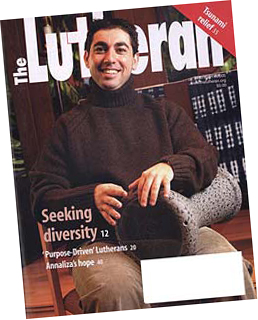“There are no pastors for you.”
Bishop Roy Almquist told Redeemer this at the turn of this century as a prelude for doing nothing to serve our congregation in his second six-year term.
He may have been very right.
It is no accident that small churches vastly outnumber large congregations. People are attracted to small congregations. Sociologically, an ideal congregation has about 150 members.
The model congregation must have 300 members to support the financial expectations of clergy and the regional body—and that’s before they do a lick of ministry or mission. When a congregation gets that big, it loses some of the qualities that attract many people to church.
A broader geographic area is needed to support this model which makes it more difficult for the congregation to stay in touch with the local needs.
The model is presented as economically desirable — fewer churches serving more people. But statistics show that fewer churches are serving fewer people. Statistics overall are down.
This model relies on the concept of a “settled pastor”— a pastor who serves a congregation for some seven years or ideally for decades. This is unrealistic today and is not likely to lead to church growth.
The epidemic of church closures is a result of a failure to adapt—hanging on to a dying model until it is too much work to turn things around—although it is probably still possible.
To survive in a diverse, quickly changing community culture, congregations need flexibility. They need to draw on professional skills that one person is unlikely to have. They may need these services for only six months, but they can’t get them because their money and fealty is tied up in one “settled pastor.”
Perhaps the growing number of clergy taking interim pastor training is a sign that they recognize that the “settled pastor” model will no longer advance the church from either the clergy or lay point of view.
The interim approach — a short-term plug for a hole which will eventually be filled more permanently — may need adjusting. It puts the management of congregations in the hands of the regional bodies—with which the congregations don’t have any day-to-day knowledge or relations. Similarly, regional bodies know only what they are told about the congregations by people with a vested interest. The odds for misinterpretation are good.
Congregational control of their own ministry — the Lutheran way — is slipping away. Attitudes are changing as the regional bodies rely more and more on their power and less on their sense of service. Congregations begin to defer decisions and rights that are constitutionally theirs. It doesn’t take long for this to become “the norm.” Congregations that insist on their rights are ridiculed and shunned—the Redeemer experience.
We will talk about this more in a later post, but this abandonment put us in an ideal position to experiment. And we were experiencing success.
The only answer many congregations hear is that they should continue to pour money down a non-producing hole until they are drained both financially and spiritually. Then, unable to meet the future, there is a grand celebration of the past as the regional body shutters the church and walks off with the spoils. Such a celebration is scheduled this week at Holy Spirit in NE Philadelphia.
We can’t help but wonder what might have been.







